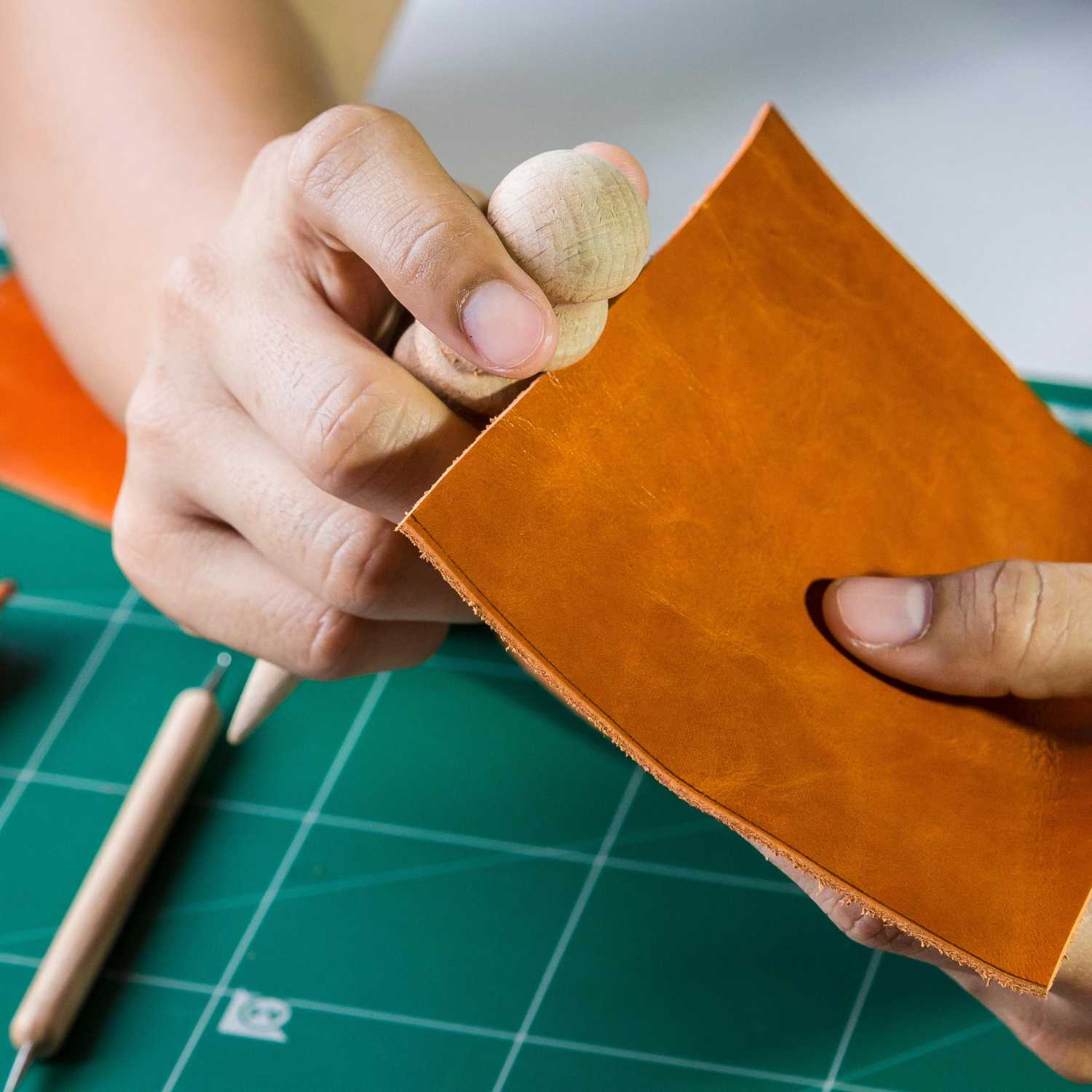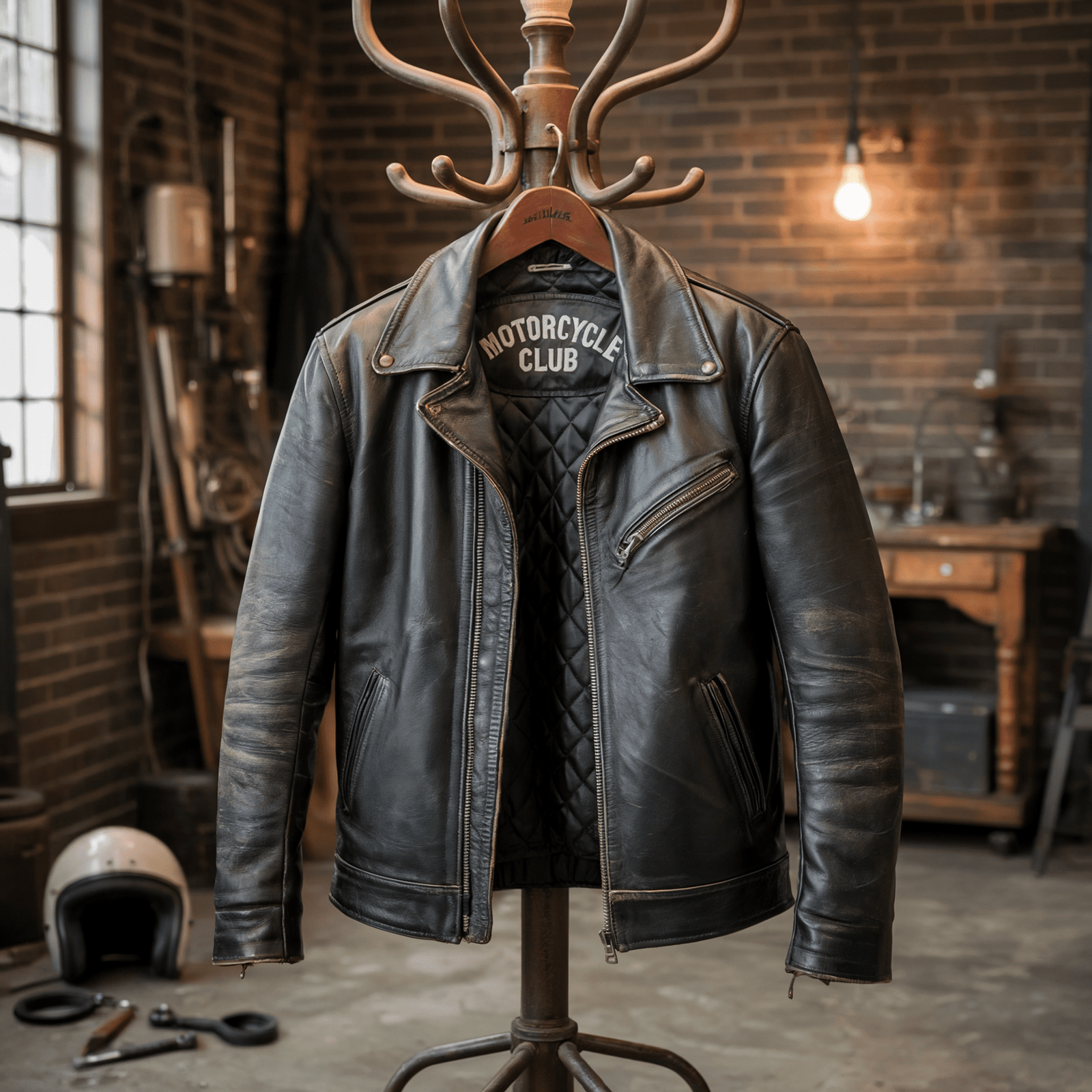Your Cart is Empty
HAPPY HOLIDAYS! SALE 10% OFF - USE COUPON HOLIDAYS AT CHECKOUT NOW!
Menu

HAPPY HOLIDAYS! SALE 10% OFF - USE COUPON HOLIDAYS AT CHECKOUT NOW!

Choose The Right Thickness for Leather with this Leather Thickness Chart
by Jennifer Smith December 19, 2023 6 min read
Key Takeaways:
- Leather thickness plays an important role in determining the durability and quality of leather products.
- The standard way to measure leather thickness is in ounces. Some brands and manufacturers may use fractional inches, irons, or millimeters to measure the thickness of leather.
- It's important to select the right thickness of leather for the intended use of the product.
Leather surpasses all materials when it comes to exquisiteness. Real leather undergoes several procedures to get its final look and feel, explaining its unmatched appeal and durability. Unlike other fabrics and materials, leather buying needs to be well thought out, considering whether the features such as leather grade, finishing, and thickness are appropriate for the intended use.
We will discuss one of the most important aspects of leather in this blog, which is the thickness of leather. You will learn the right definition of thickness, how it's measured, and how leather with varying thickness ranges is used. Besides, you will get the easiest leather thickness chart here to help you convert standard and branded units and pick the right type of leather for your product.
Defining Leather Thickness
Pick up a piece of leather and observe its edges. The breadth between the two surfaces is its thickness. The range of thickness impacts the strength, durability, and appearance of leather. Depending on how thick leather is, it will be deemed suitable for a particular use.
If leather is thicker and heavier, it would have a higher endurance, making it suitable for products that require durability, such as shoes, bags, and belts. Thin leather, on the other hand, is better suited for clothing, gloves, small bags, and watch straps.
Several factors play a part in determining the leather weight or thickness. It depends on what part of the animal it comes from, as some sections of the hide have a fine grain while some have an uneven texture. Splitting, shaving, tanning procedures, and pressing processes also impact the thickness of leather. Leather is measured repeatedly during the splitting and shaving process to ensure consistent thickness.
How is Leather Weighed?
The thickness of the leather is conveyed in weight. By determining the weight per square foot, we can measure the thickness of a particular leather. It is one of the ways to check the quality of leather.
A sample section is taken from the hide to weigh the leather. The weight is then divided by the area of the sample in square feet. This gives us an accurate leather weights range, as seen in the leather weight chart.
Measuring Leather Thickness
To ensure the quality of a leather product, you can measure the thickness of the leather using different tools. A simple leather thickness gauge can be used to determine the thickness range. Another manual tool to assess the thickness of the leather is a leather caliper, which shows the measurement in inches and ounces.
Advanced tools such as ultrasonic thickness gauges or laser gauges are also commonly used by leather workers in the leather industry. Leather thickness measured with these tools is more accurate.
The leather hide has slightly variable thickness across sections, so the leather thickness conveys weight in ranges, such as 2-3 oz. The measurement can also be taken in millimeters or fractions of an inch.
How is Leather Thickness Measured? Standard Scale vs Branded Scale
The thickness or weight of leather is measured in different units worldwide. The standard scale of ounces per square foot is used in the US to convey the thickness of leather. In countries where the standard scale is not used, leather is typically measured in millimeters, inches, or irons. The leather oz chart can help you convert standard scale measurements into other scales.
Branded scales for the measurement of thickness may be different for each leather manufacturer. A conversion chart may help you convey weight accurately.
What is the Thickness of Each Ounce of Leather?
When you are buying something made of leather or making a leather product yourself, you may need to know about its relative thickness in other units of measurement. A leather thickness conversion chart helps understand the basic conversions of a specific range measured in ounces. Below, you will find approximate equivalent values of each ounce of leather in irons, millimeters, or inch fractions.
- 1 oz leather thickness is equivalent to 0.4 mm, 1/64”, and 0.75 irons.
- 2 oz leather thickness is equivalent to 0.8 mm, 1/32”, and 1.5 irons.
- 3 oz leather thickness is equivalent to 1.2 mm, 3/64”, and 2.25 irons.
- 4 oz leather thickness is equivalent to 1.6 mm, 1/16”, and 3.0 irons.
- 5 oz leather thickness is equivalent to 2.0 mm, 5/64”, and 3.75 irons.
- 6 oz leather thickness is equivalent to 2.4 mm, 3/32”, and 4.5 irons.
- 7 oz leather thickness is equivalent to 2.8 mm, 7/64”, and 5.25 irons.
- 8 oz leather thickness is equivalent to 3.2 mm, 1/8”, and 6.0 irons.
- 9 oz leather thickness is equivalent to 3.6 mm, 9/64”, and 6.75 irons.
- 10 oz leather thickness is equivalent to 4 mm, 5/32”, and 7.5 irons.
- 11 oz leather thickness is equivalent to 4.4 mm, 11/64”, and 8.25 irons.
Leather Thickness Ranges and Their Product Suitability
To know about the suitable application of different leather thicknesses, refer to the table below:
2-3 oz: embossing, lining, shoes, thin bags and boots, light wallets.
3-4 oz: light bags, thick wallets, light upholstery, embossing.
4-5 oz: boots, knife sheaths, book covers, light chaps, saddle bags, and purses of medium thickness.
5-6 oz: cases for phones and tablets, knife sheaths, light moccasins or boots, thicker pouches, and chaps.
6-7 oz: heavier cases for phones and tabs, light moccasins, book covers, thin belts, and light armor.
7-8 oz: heavy boots, shoes, light pet collars, light sheaths, duffels, belts, light holsters
8-9 oz: standard straps, handbags, carrying cases, slings, pet collars, medium holsters.
9-10 oz: heavy holsters, light armor, keychains, large handbags, thicker carrying cases.
10-11 oz: medium armor, heavy straps, saddles, cattle halters.
Thicker leather measuring more than 11 oz is usually used for heavy bags, slings, harnesses, and heavy armor. They are also utilized in the making of shoe soles and heels.
Choosing Thickness of Leather for your Custom Leather Jacket
Want a specific leather weight or thickness range for your custom leather jacket? Leather Skin Shop gives you the option to choose your desired thickness of leather while customizing your jacket. You can choose a suitable thickness according to the intended use of your jacket.
FAQs
What is Leather Thickness?
Thickness of leather is a characteristic that determines the heaviness of the material. It is an important factor to consider as it affects the final product's durability, flexibility, strength, and look.
Among all animals, which one has the thickest leather?
Ostrich leather is the thickest leather of all animal leathers. Cowhide is the thickest of all if we talk about commercially available leathers.
How strong is leather?
The best feature of the leather is its unmatched strength and durability. As it is acquired from animal hides, the long tight natural fibers give it a higher endurance than other fabrics and materials.
Which type of leather has the longest lifespan?
Full grain leather lasts longer than any other type of leather. As the hide is in its original form without sanding its natural grain, it is the most durable of all leather types.
In the context of leather, what does "oz" stand for?
The leather thickness is measured in ounces as a standard, for which the unit "oz" is used.
What is the recommended thickness for a wallet made of leather?
For a good quality leather wallet that will hold its shape for a very long time, you can choose a thickness range of 3-4 oz.
What is the ideal thickness for a leather jacket?
Ideally, 1-2 oz leather is quite suitable for making lightweight leather jackets. For a heavy-duty biker jacket, you can go for a 3 oz leather jacket thickness.
Conclusion
The leather thickness guide above will help you choose the right thickness for your project. It will ensure that your product will get the desired look and durability. Moreover, you can refer to the leather thickness chart to convert ounces into any other unit of measurement or vice versa.
Leave a comment
Comments will be approved before showing up.
Also in Blog | Leather Skin Shop

Types of Sleeves in a Leather Jacket
by Jennifer Smith August 24, 2025 6 min read
The different types of sleeves shape the shoulder, control the movement, and change how the leather jacket looks in motion. There are various types of sleeves, such as cap sleeves, bell sleeves, raglan sleeves, and more.

How to Get Smell Out of Leather Jacket?
by Jennifer Smith August 08, 2025 4 min read
Over time, a leather jacket can smell like sweat, mildew, or smoke. But do not worry, there are safe, proven ways to get rid of those unpleasant smells at home.

What Is A Trench Coat
by Jennifer Smith August 02, 2025 6 min read
A trench coat is a long, lightweight outerwear piece designed to protect against wind and rain. Its defining features include a double-breasted front, a belted waist, wide lapels, and often epaulets and a storm flap.
Leather Jackets for Men
Leather Jackets for Women
Accessories for Men & Women
Recent Articles
- Types of Sleeves in a Leather Jacket
- How to Get Smell Out of Leather Jacket?
- What Is A Trench Coat
- What Is A Peacoat Jacket?
- What is Polyester Fabric?
- What is Satin Fabric?
- What is Shearling Leather?
- Varsity Jacket Or Letterman Jacket? Everything You Need To Know Before Buying
- What is Semi Aniline Leather?
- What Is Cotton Fabric?
Size Chart